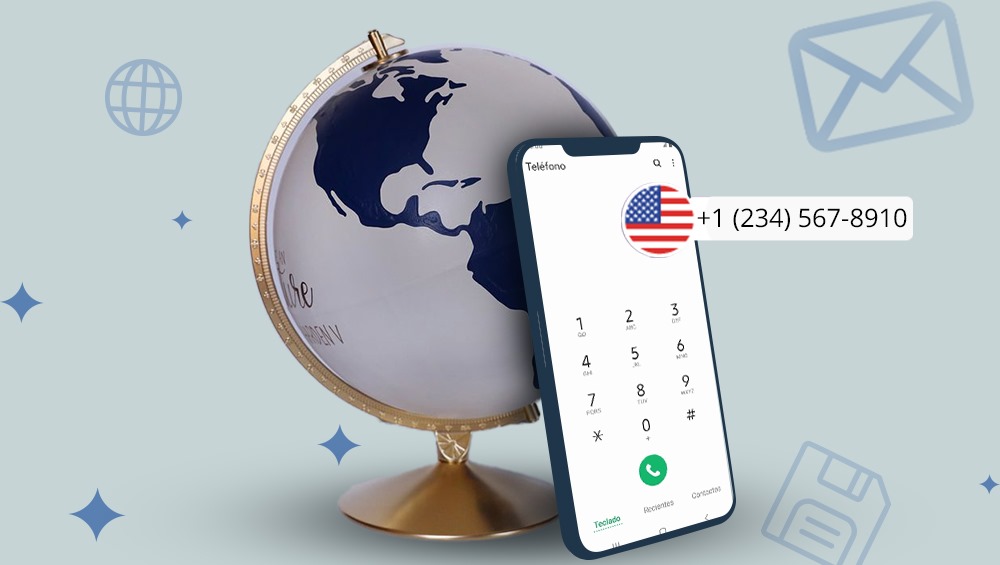Introduction to DID Numbers
In the realm of modern telecommunications, efficiency and convenience are paramount. Whether you’re running a bustling corporation or a small startup, ensuring seamless communication is essential for success. Direct Inward Dialing (DID) numbers have emerged as a critical tool in achieving this goal. In this comprehensive guide, we will delve deep into the world of DID numbers, exploring their functionality, benefits, and how they revolutionize communication systems.
Understanding DID Numbers
At the core of any discussion about DID numbers lies a fundamental question: what are they, and how do they function? Understanding DID Numbers is crucial for unlocking their full potential. Essentially, a DID number is a virtual phone number that enables callers to directly reach an individual within a company’s private branch exchange (PBX) system. Unlike traditional phone lines, where each line corresponds to a single phone number, DID numbers allow multiple phone numbers to be associated with one or more physical phone lines.
Direct Inward Dialing Explained
To grasp the concept fully, let’s break down how DID numbers operate. When a caller dials a DID number, the call is routed directly to the intended recipient’s extension without the need for manual intervention by a receptionist or operator. This process, known as Direct Inward Dialing, streamlines communication channels, reduces call waiting times, and enhances overall efficiency.
The Mechanics Behind DID Numbers
So, how exactly do DID numbers work? The key lies in the underlying technology of PBX systems. Each DID number is configured to correspond to a specific extension within the PBX. When a call is made to a DID number, the PBX uses a process called ‘number translation’ to determine the recipient’s extension and route the call accordingly. This seamless redirection of calls enables businesses to manage their incoming calls more effectively, ensuring that they reach the right person every time.
Benefits of DID Numbers
The adoption of DID numbers offers a myriad of benefits for businesses of all sizes. One of the most significant advantages is improved call management. By assigning unique DID numbers to individual employees or departments, organizations can streamline communication workflows and minimize call congestion. Additionally, DID numbers enhance customer satisfaction by providing direct access to the appropriate contacts, eliminating the frustration of navigating through automated menus or waiting on hold.
Enhanced Flexibility and Scalability
Another compelling aspect of DID numbers is their inherent flexibility and scalability. Unlike traditional phone systems that require physical phone lines for each phone number, DID numbers operate over existing broadband connections. This means that businesses can easily add or remove numbers as needed without the hassle of installing additional infrastructure. Whether you’re expanding your team or reconfiguring your communication setup, DID numbers adapt to your evolving needs with minimal disruption.
Cost Efficiency and Geographic Flexibility
From a financial perspective, DID numbers offer significant cost savings compared to traditional phone services. By consolidating multiple phone numbers onto a single trunk line, businesses can reduce their monthly telecom expenses while maintaining a professional image. Furthermore, DID numbers provide geographic flexibility, allowing organizations to establish a local presence in multiple regions without the overhead costs associated with maintaining physical offices.
Enhanced Call Analytics and Reporting
In addition to improving call management, DID numbers also empower businesses with valuable insights through advanced analytics and reporting capabilities. By tracking call volume, duration, and other metrics associated with each DID number, organizations can gain a deeper understanding of their communication patterns and customer behavior. This data-driven approach enables informed decision-making and facilitates continuous improvement in customer service and operational efficiency.
Ensuring Security and Compliance
In an era where data security and privacy are paramount concerns, DID numbers offer enhanced security features to protect sensitive information. Through robust encryption protocols and secure transmission channels, businesses can safeguard their communications against interception and unauthorized access. Moreover, DID numbers facilitate compliance with industry regulations such as HIPAA and GDPR by enabling secure transmission of confidential information without compromising regulatory requirements.
Integration with Unified Communications
As businesses embrace digital transformation, the integration of DID numbers with unified communications (UC) platforms has become increasingly prevalent. By combining voice, video, messaging, and collaboration tools into a single cohesive platform, UC solutions enhance productivity and collaboration across distributed teams. DID numbers play a crucial role in this ecosystem by providing seamless connectivity and interoperability between different communication channels.
Conclusion: Leveraging the Power of DID Numbers
In conclusion, DID numbers represent a paradigm shift in the way businesses manage their communication infrastructure. By enabling direct access to individual extensions within a PBX system, DID numbers streamline call management, enhance customer experience, and drive operational efficiency. With their flexibility, scalability, and advanced features, DID numbers have become indispensable tools for organizations seeking to stay ahead in today’s fast-paced business environment. Embracing the power of DID numbers is not just about upgrading your communication system; it’s about unlocking new possibilities for growth, innovation, and success.
